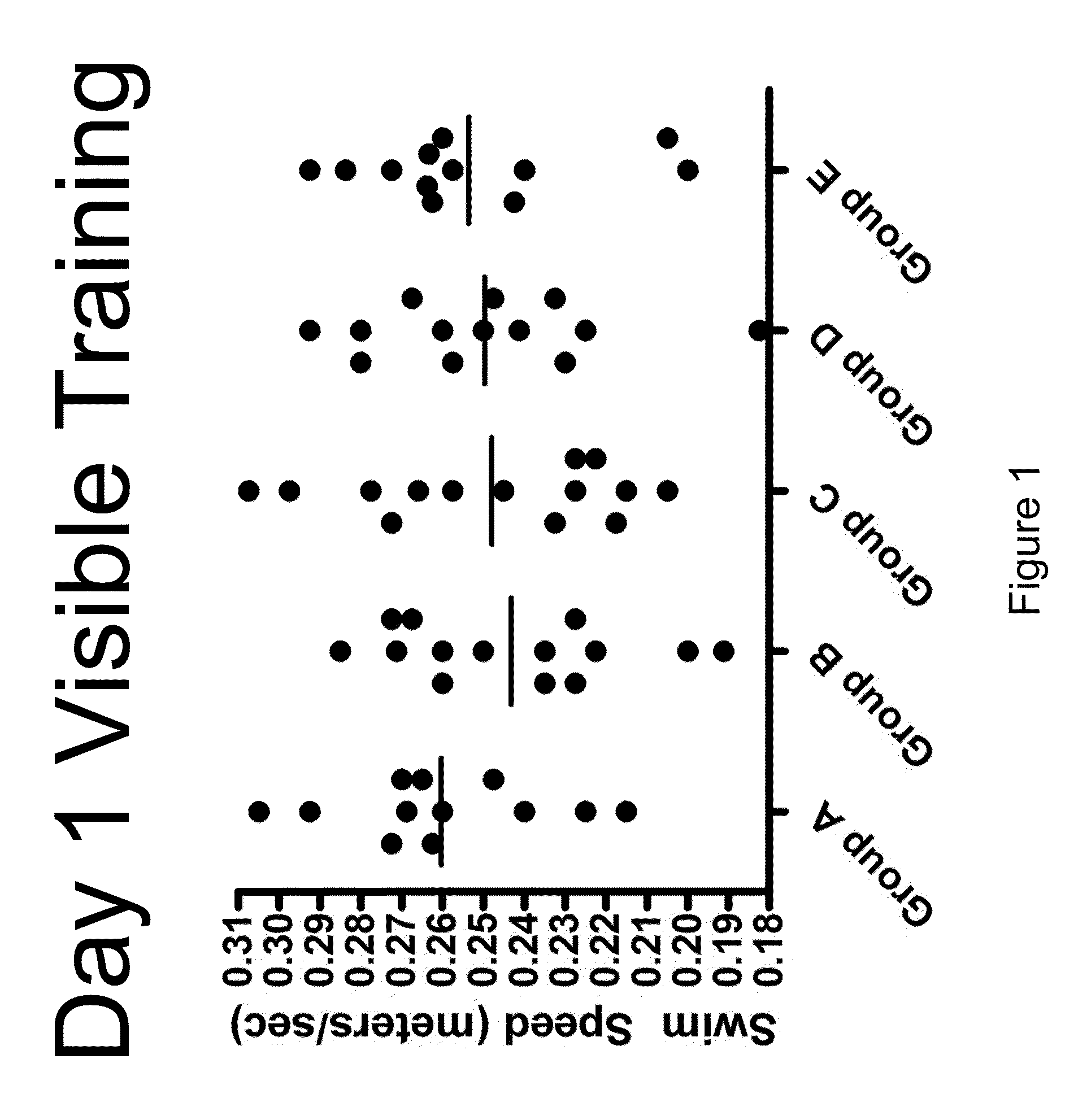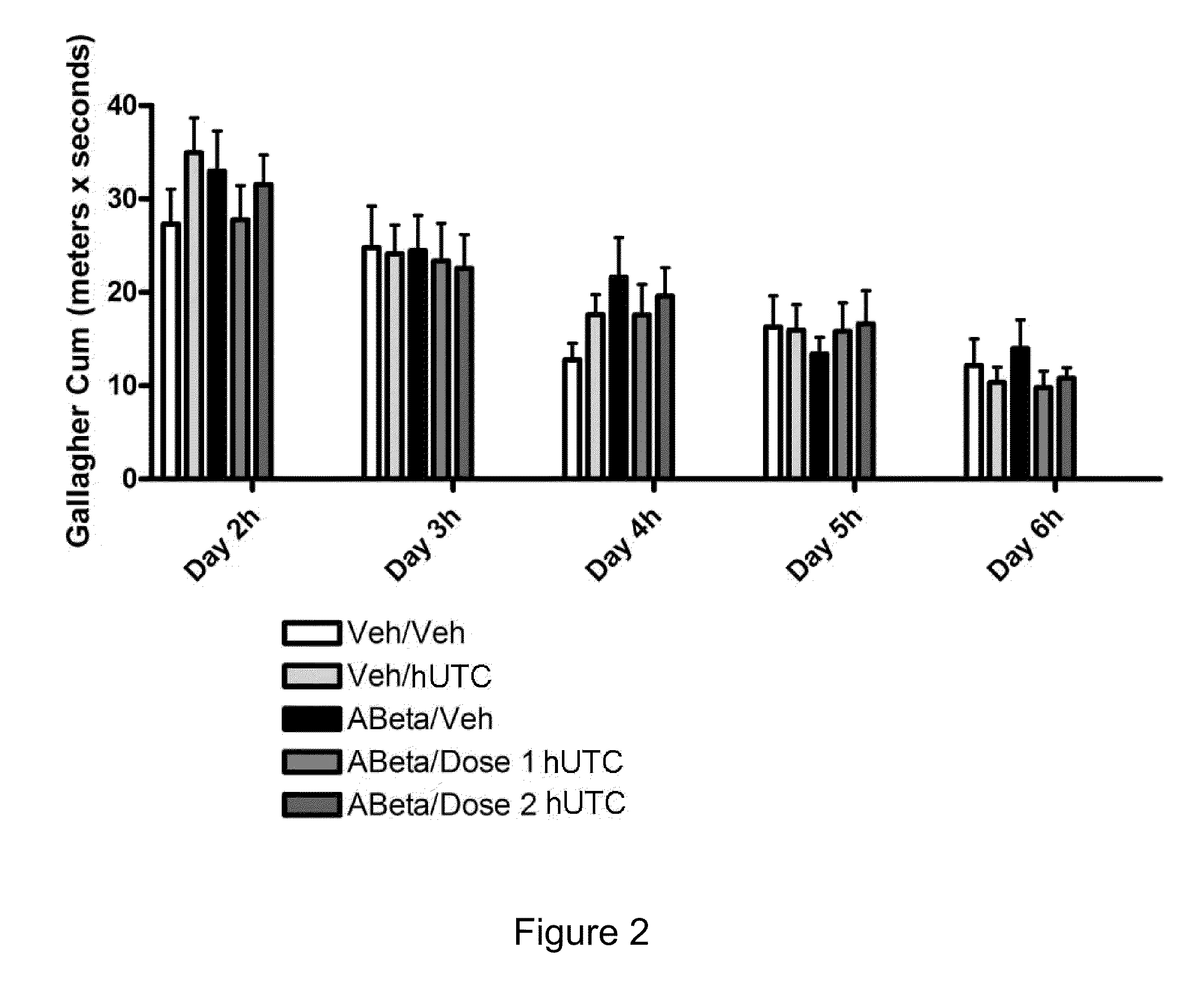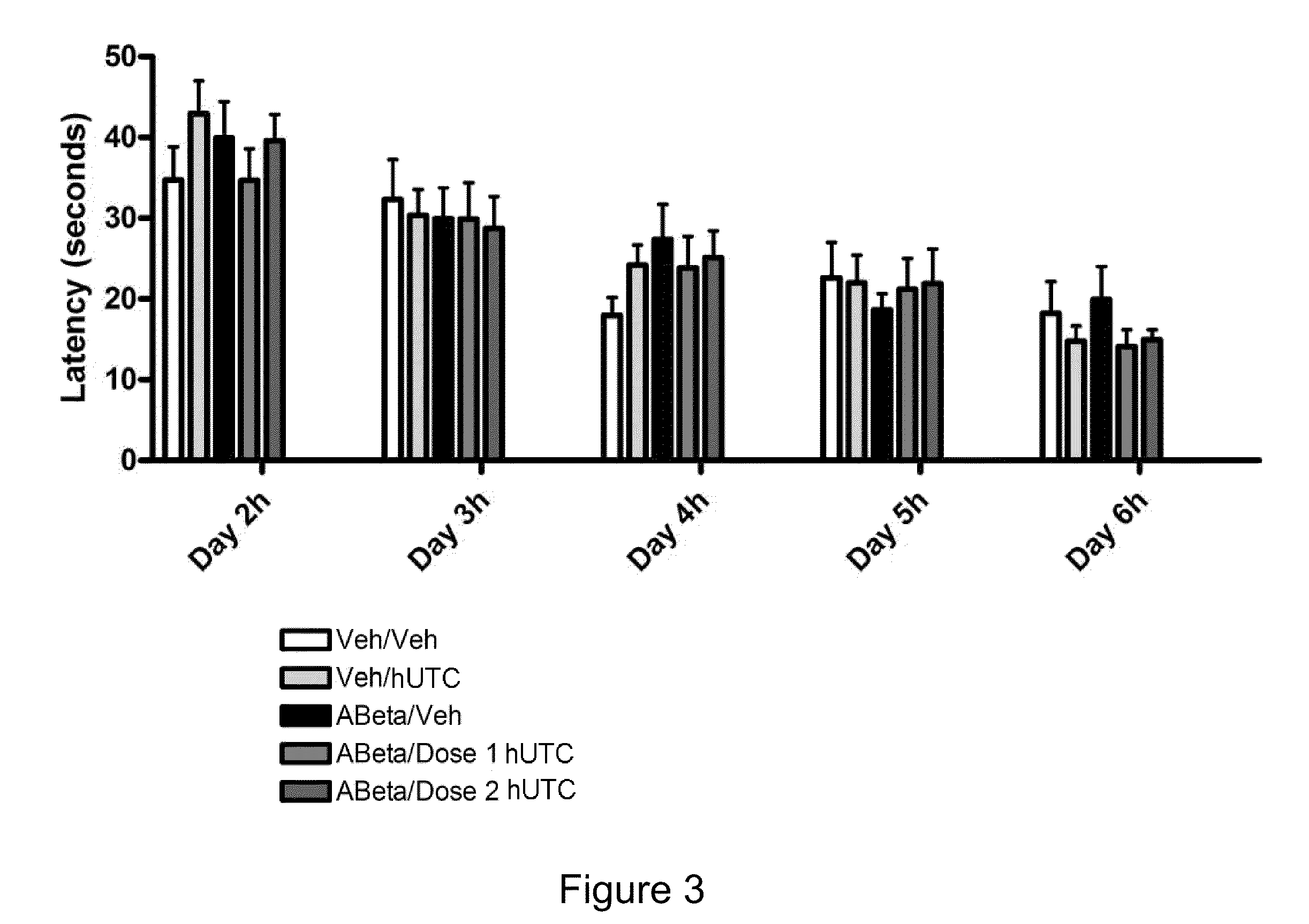hUTC AS THERAPY FOR ALZHEIMER'S DISEASE
a technology for alzheimer's disease and hutc, which is applied in the field of hutc as therapy for alzheimer's disease, can solve the problems of affecting the survival of patients, and the inability to recognize the failure of memory of alzheimer's disease, so as to reduce the prevalence of senile plaques and improve neuroprotection. the effect of reducing the prevalence of plaques
- Summary
- Abstract
- Description
- Claims
- Application Information
AI Technical Summary
Benefits of technology
Problems solved by technology
Method used
Image
Examples
specific embodiments
[0057]For all embodiments of the invention, an individual diagnosed with Alzheimer's disease, or exhibiting symptoms of Alzheimer's disease, is administered a population of cells in an amount effective to treat the Alzheimer's disease, or its symptoms. Specific embodiments of the invention are directed to local administration of a population of cells to facilitate plaque removal by phagocytic mechanisms and / or active endogenous mechanisms to reduce the progression of plaque formation, and stimulate and support neural tissue growth and / or healing. The cells may be any discussed below, including stem cells, postpartum-derived cells, umbilical-derived or placenta-derived cells. In one embodiment, the cells are hUTC. A more detailed explanation of preferred cells is described in the below specification. Some embodiments are to compositions administered to the individual, where the composition includes a population of cells, and a pharmaceutically acceptable carrier. Such compositions ca...
example 1
hUTC in an Amyloid Infusion Model of Alzheimer'S Disease
[0157]The objective of this study was to determine the efficacy of hUTC in an amyloid infusion model of Alzheimer's Disease (AD). The effect of administration of hUTC on memory, amyloid deposit and other measures of efficacy in the brain was evaluated after injection of amyloid protein. The rat amyloid-beta (Abeta) intracerebroventricular infusion can model aspects of AD. High density lipoprotein (HDL), a normal plasma carrier of Abeta, is used to attenuate Abeta aggregation causing Abeta-dependent toxicity and cognitive deficits. The rat in vivo infusion model is a useful, cost-effective method for screening new therapies for AD.
I. Methods & Materials
[0158]Sprague Dawley rats were implanted with a cannula and a delivery device. The animal's brains were infused with recombinant amyloid protein (experimental group) or phosphate buffer saline (sham control) for two weeks. The infusions ceased, and the animals were allowed to reco...
example 2
hUTC in a Genetic Model of Alzheimer's Disease
[0171]The objective of this study is to determine the efficacy of hUTC in a genetic model of Alzheimer's Disease.
I. Materials & Methods
[0172]Rodent models that carry deleted or added genes that may mimic the Alzheimer's Disease phenotype will be used. These animals may carry single or multiple mutations that will induce the accumulation and deposition of proteins in the brain that will lead to the alteration and possible accumulation of several proteins in the brain that will lead to the alteration and possible accumulation of several proteins such as amyloid and tau that accumulate in the brains of AD patients. Examples of these models include but are not limited to APP+PS1 double transgenic mice, presenillin knockout animals. (ApoE transgenic mice.) The accumulation of these proteins leads to the cell death and cognitive dysfunction. hUTC may be administered through direct injection into the brain or through systemic injection. Functio...
PUM
| Property | Measurement | Unit |
|---|---|---|
| Volume | aaaaa | aaaaa |
| Volume | aaaaa | aaaaa |
| Volume | aaaaa | aaaaa |
Abstract
Description
Claims
Application Information
 Login to View More
Login to View More - R&D
- Intellectual Property
- Life Sciences
- Materials
- Tech Scout
- Unparalleled Data Quality
- Higher Quality Content
- 60% Fewer Hallucinations
Browse by: Latest US Patents, China's latest patents, Technical Efficacy Thesaurus, Application Domain, Technology Topic, Popular Technical Reports.
© 2025 PatSnap. All rights reserved.Legal|Privacy policy|Modern Slavery Act Transparency Statement|Sitemap|About US| Contact US: help@patsnap.com



